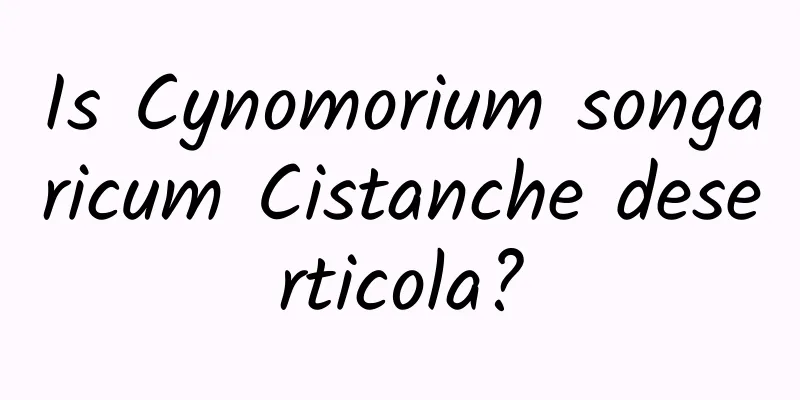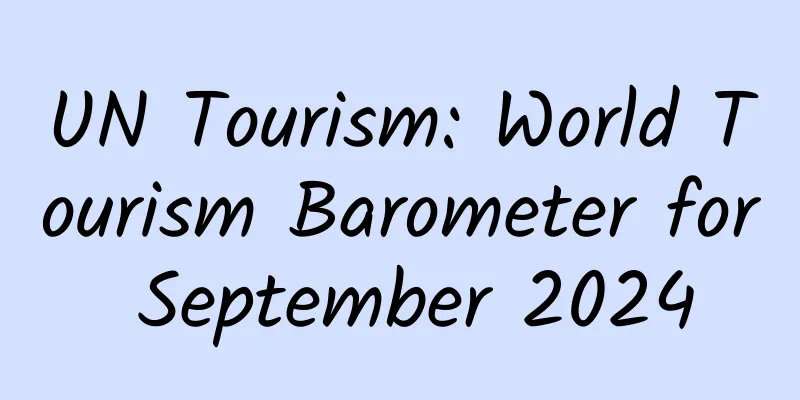Is Cynomorium songaricum Cistanche deserticola?

|
There are many types of Chinese herbal medicines. Some are similar in appearance, some have the same medicinal properties, some are similar in both appearance and medicinal properties. Of course, some are similar in appearance but have very different medicinal properties. So, this requires us to work hard to identify them. Today, let’s take a look at these two medicines, whether Cynomorium songaricum is Cistanche deserticola. Cistanche deserticola Ma (scientific name: Cistanche deserticola Ma), also known as Xinjiang Yun, Cun Yun, Cistanche, and Chagan Gaoya (Mongolian), is an endangered species. Tall herbs, 40-160 cm tall, mostly underground. The flowering period is from May to June, and the fruiting period is from June to August. It is mainly produced in Xinjiang and Alxa League of Inner Mongolia, and is also distributed in Gansu and Ningxia. Cistanche deserticola is a parasitic plant that lives on the roots of the desert tree Haloxylon ammodendron, absorbing nutrients and water from its host. It is known as the "desert ginseng" and has extremely high medicinal value. It is a traditional precious Chinese medicinal material. In history, Cistanche deserticola has been regarded as a precious tribute to the imperial court by the Western Regions. It is also one of the most frequently used tonic medicines in kidney-tonifying and yang-strengthening prescriptions throughout the ages. Cistanche prefers to grow on soft sandy land with slight salinization. It generally grows on sandy land or semi-fixed sand dunes, dry old riverbeds, lake basin lowlands, etc. The habitat conditions are very poor. The climate in the growing area is dry, with little rainfall, high evaporation, long sunshine hours and large temperature difference between day and night. The soil is mainly gray-brown desert soil and brown desert soil. The host plant Haloxylon ammodendron is a strong xerophyte. Cistanche deserticola mostly parasitizes on its lateral roots 30-100 cm deep. It grows in the desert at an altitude of 225-1150m, and parasitizes on the roots of plants such as Haloxylon ammodendron and Haloxylon persicum of the Chenopodiaceae family. Cistanche deserticola is a perennial parasitic seed plant that is selective to hosts, soil, and climatic conditions. The more suitable hosts are Haloxylon ammodendron, Tamarix chinensis, and Althaea officinalis. The hosts can be natural Haloxylon ammodendron, Tamarisk, etc., or they can be artificially planted with Haloxylon ammodendron and Tamarisk and then inoculated with Cistanche deserticola after 2-3 years. Cynomorium songaricum, also known as Ulan Gaoyao, ground hairball, sheep lockbula, Latin name: Cynomorium songaricum Rupr. It is a perennial fleshy parasitic herb of the Cynomorium family and the genus Cynomorium. It has no chlorophyll, the whole plant is reddish brown, 15-100 cm tall, and most of it is buried in the sand. The parasitic roots are covered with Cynomorium buds of varying sizes, which are initially nearly spherical, then become elliptical or long columnar, with many fibrous roots and fallen scaly leaves. The stem is cylindrical, erect, brown-brown, and buried in the sand with tiny fibrous roots, especially at the base, which is slightly thickened or swollen. The stem is covered with spirally arranged deciduous scale leaves, which are denser in the middle or base and gradually sparse upwards; the scale leaves are ovate-triangular, with extremely short filaments, and the anthers are the same as those of male flowers; the pistil is also the same as that of female flowers. The fruit is nut-shaped, most of which are very small, nearly spherical or ellipsoidal, with white skin and a persistent light yellow style at the top. The seeds are nearly spherical, dark red, and have a hard and thick seed coat. The flowering period is from May to July, and the fruiting period is from June to July. It can nourish the kidney, improve the essence, and moisten dryness. It is mainly used to treat impotence, spermatorrhea, soreness of the waist and knees, dry intestines and constipation. It has a certain effect on paralysis and improving sexual dysfunction. Perennial succulent parasitic herb, without chlorophyll, the whole plant is reddish brown, 15-100 cm tall, and most of it is buried in the sand. The parasitic roots are covered with Cynomorium songaricum buds of varying sizes, which are initially nearly spherical, then become elliptical or oblong, with a diameter of 6-15 mm, and have many fibrous roots and fallen scaly leaves. The stem is cylindrical, erect, brown-brown, 3-6 cm in diameter, and the stem buried in the sand has tiny fibrous roots, especially more at the base, which is slightly thickened or swollen. The stem is covered with spirally arranged deciduous scale leaves, which are denser in the middle or base and gradually sparse upwards; the scale leaves are ovate-triangular, 0.5-1.2 cm long, 0.5-1.5 cm wide, and pointed at the tip. The spadix grows at the top of the stem, extending out of the ground, is club-shaped, 5-16 cm long and 2-6 cm in diameter; it is covered with very dense small flowers, with male and female flowers and both sexes growing together, fragrant, and scaly leaves scattered in the inflorescence. Male flowers: 3-6 mm long; tepals usually 4, free or slightly connate, oblanceolate or spatulate, 2.5-3.5 mm long, 0.8-1.2 mm wide, white at the bottom, purple-red at the top; nectary nearly obovate, bright yellow, 2-3 mm long, with 4-5 blunt teeth at the top, half embracing the filament; 1 stamen, thick filament, dark red, extending beyond the corolla when the flower is in full bloom, up to 6 mm long; anther T-shaped, dark purple-red, oblong-obovate, about 1.5 mm long; pistil degenerate. Female flowers: flowers about 3 mm long; tepals 5-6, linear-lanceolate, 1-2 mm long, 0.2 mm wide; style rod-shaped, about 2 mm long, purple-red on the upper part; stigma truncate; ovary semi-inferior, containing 1 terminal drooping ovule; male flowers degenerate. Bisexual flowers are rare: flowers are 4-5 mm long; tepals are lanceolate, 0.8-2.2 mm long and about 0.3 mm wide; there is one stamen, inserted above the inferior ovary between the pistil and the tepals; filaments are extremely short, anthers are the same as those of male flowers; pistils are also the same as those of female flowers. The fruit is nut-shaped, most of which are very small, with one plant producing about 20,000 to 30,000 fruits. It is nearly spherical or elliptical, 0.6-1.5 mm long and 0.4-1 mm in diameter. The peel is white with a persistent light yellow style on the top. The seeds are nearly spherical, about 1 mm in diameter, dark red, and have a hard and thick seed coat. The flowering period is from May to July, and the fruiting period is from June to July. Okay, today, we have learned about whether Cynomorium songaricum is Cistanche deserticola. Although Cynomorium songaricum and Cistanche deserticola are similar in appearance and their main functions as herbs are similar, it should be noted that among Chinese herbal medicines, there are many that can cause people to confuse them, but not all of the medicines that can cause people to confuse have the same medicinal properties. Everyone must be careful and don’t take medicinal herbs blindly! |
<<: What are the effects of Epimedium and Poria?
>>: Does Cistanche have any side effects?
Recommend
Lighthouse inheritance | Lu Yuanjiu: The scientific spirit is to work honestly
On June 29, 2021, the "July 1st Medal" ...
The efficacy and function of Brahma flower
I wonder if you have ever heard of the Brahma flo...
The efficacy and function of elm fungus
The Chinese medicine Elm Ear is a very good Chine...
The efficacy and function of Shishangjiao
As the pressure of modern life increases, more an...
The efficacy and function of Huihui garlic
Huihui garlic is a medicinal material that can tr...
What are the medicinal values of Patrinia scabra
When Chinese medicine treats diseases, it uses ma...
The efficacy and function of yew
Yew is a very precious first-class protected plan...
Will taking Chinese medicine in summer cause internal heat?
We all know that Chinese medicine can have some a...
How to move a 200-ton hotel? Just 700 bars of soap
What tools are needed to move a building? Recentl...
Frost Descent | Why does frost-bitten cabbage taste better?
=================================================...
Global Tourism Research Series: Portugal, Europe's Backyard
Mild winters, hot summers, and a diverse array of...
What medicine is good for softening blood vessels?
Hypertension and high blood lipids are very commo...
The efficacy and contraindications of Chinese medicine Poria cocos
It is the sclerotium of the porous fungus Coix la...
The boulder is from an alien planet? It's you who are from outer space!
Author: Ji Yang The article comes from the Scienc...
Family members, these 5 electrical appliances are "power-consuming assassins", don't forget to unplug them when you return home for the holidays
During the Spring Festival holiday, most people w...









